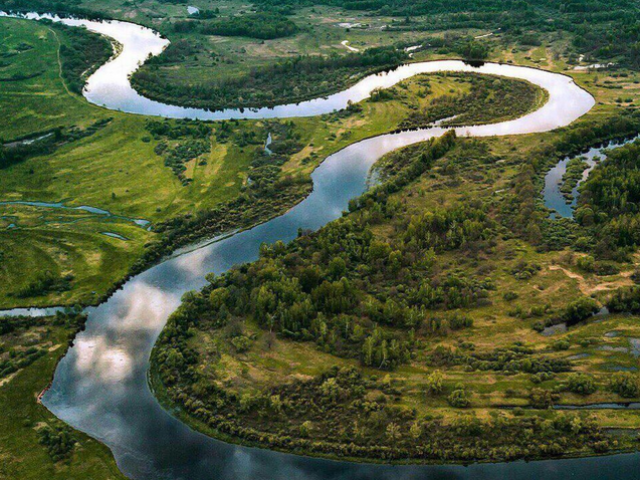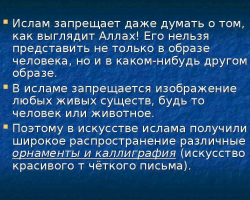Where are the rivers flow? An interesting topic for discussing with children on the "surrounding world."
Content
- "The World": Why and where are the rivers flow?
- The course is one of the main characteristics of the rivers
- Mountains and plain rivers: What is the difference?
- The origins and tributaries of the river: What is it?
- River channel: What is it?
- The mouth of the river: What is it?
- Water cycle: why does the water in the rivers do not end?
- What is the benefit of the river to people?
- How do the river and the sea differ?
- Video: The world around the world is grade 1. Lesson - where are the rivers flow?
- Video: Why do rivers flow?
- Video: Rivers
River- this is A constant flow of water, each has its own individual current, through high -altitude differences, due to the effects of gravity.
Read on our website another interesting article on the topic: "Description of the river on the" surrounding world ". You will find out what parts of the river exist, where the origins are.
Why and where are the rivers striving? What are they and why do not end? These and other issues will be considered in the article below. Read further.
"The World": Why and where are the rivers flow?

River- This is a huge natural channel through which water flows due to universal gravity. School subject teachers "The world" Children are explained by this process simply. So, why and where the rivers flow:
- The main reason is the property of the fluidMore precisely, you should consider in more detail its chemical properties and pay attention to the fluidity.
- It is called thanks to gravity on the globe.
- Further, gravity is formed, which makes the liquid flow.
- All rivers have two types of currents: underground, aboveground.
- The soil itself is located above the level of the ocean. Usually, this is called the level of the oceans. This parameter is considered to be an initial, basic point of height from some piece of land.
Each river has its beginning in the form of a small spring, which flows into a small brook, and it rains along the way, filling it more and more. All meltwater feed the rivulet and turn it into a large river. Basically, they take their beginning high on the tops of the mountains, where glaciers melt and avalanches go. Then the volume of water will be many times larger. It also happens that the lake is overflowing and begins to flow out, thus, a new river has formed. An example is Neva. Next, the gravitational force acts, and all rivers flow down the relief. The direction depends on the state of the relief pattern:
- From North to South
- From west to east
- From south to north
- West
- From north to east
- From east to south, etc.
There are exceptions rivers that do not fall into lakes, seas or oceans. They are lost in hot sands of agricultural deserts. It is important that each rivulet has its own direction.
The course is one of the main characteristics of the rivers
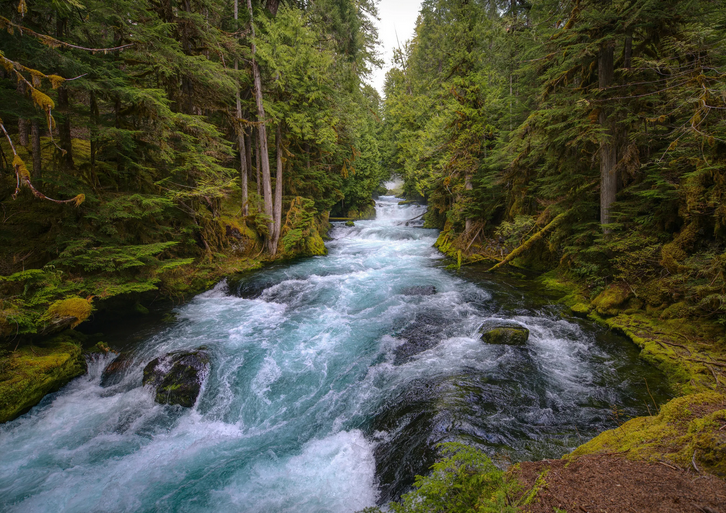
The course is the movement of water in the individual direction. This is one of the main characteristics of the rivers. Each area has its own unique relief, which is able to influence the following processes:
- Fluctuations in fluid levels
- New waters
- Stream acceleration
In addition to the relief, the additional factors affect the speed parameter of the current: additional factors are affected:
- Winds
If the wind rises and its direction coincides with the course of the river in one direction, then the speed may significantly increase.
- Water temperature
If tributaries with different temperatures are mixed inside the river, then the flow rate is gaining. It is worth noting, as mentioned above - currents in one direction, for example, only from north to south, do not exist. It is different and can be from any side. Also, depending on the landscape where the rivers flow its own character of the current:
- Mountain
- Flat
- Mixed
Interesting: You can often observe that there are many huge stones in rivers with fast speed, steep turns of the channel and thresholds. Such natural phenomena are seriously difficult to move ships, ferries, etc.
Mountains and plain rivers: What is the difference?
Mountain rivers -this is the rivers that flow in the mountainous areas, in a deep and narrow valley, have large shores and rocky channel, are saturated with debris from rocks. If the river is mountainous, and the breeds have a different frequency of rock strength, then the formation of waterfalls and thresholds is possible. In waterfalls, height may exceed a couple of hundred meters. Mountain rivers are characterized not only by a quick flow and a large slope, but also by a small depth. In addition to thresholds and waterfalls, there are still blurry processes.
- Typically, slopes of 60-80 m/km in the upper reaches, and in the lower reaches of 5-10 m/km.
- As for the speed of the current, it varies from 1-5 meters per second.
- It happens that with strong mountain winds, the speed increases to 120 meters per second.
- Water tributaries, after sunrise, increase and accumulate until 17 hours, reaching the maximum mark.
- The water level of mountain rivers is always different and at any time of the day it can increase markedly.
- The water temperature is very cold. In the upper reaches is the maximum +7 degrees Celsius, and the minimum is only +3 degrees Celsius.
Plain rivers -this is a reservoir that has a calm, languid flow with a wide valley. Such streams are exclusively in a flat area, where reaches and rifts alternate. This type of river can begin with the mountains, have a stormy flow, and then stirring into a wide direction - to calm down, as if always the current was quiet and laid -back. Plain rivers often create many meander, which look like gyrus, which follow one after another.
How these types are different, it is worth fixing what you need to remember:
- Flow. Mountains - fast and violent. Plain - slow and calm.
- Water temperature.Mountains are cold. Plain - warm.
- Trajectory. Mountains - steep, winding. Plain - soft, smooth.
- Relief.Mountains - have jumps in the landscape, the height between the mouth and the source differs significantly. Plain - the terrain is even rocky, and not rocky.
It is worth noting that the highest waterfall in the world is Angel. Its height is 970 meters. A powerful water stream is crushed and creates water dust, which resembles fog.
The origins and tributaries of the river: What is it?
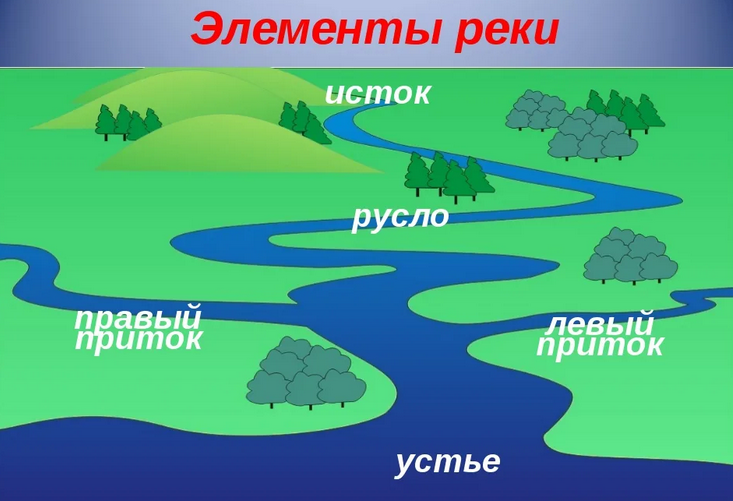
Source -the place where the reservoir begins. The river can begin with a spring, lake, swamp or glacier. Based on the knowledge of the river system, which has a large number of sources - the source that is most removed from the mouth or is much water is considered the main thing. It is found that large rivers begin from the merger of two or more rivers.
Turning -a reservoir that enters another reservoir. This is an integral element of the river system, which consists of the main river and tributaries. At the main river, tributaries are divided in order:
- 1 order - flows into the main river
- 2 order - falls into 1 order, then into the main river
- 3 order-falls into 2nd order, then in the 1st and then in the main river
Interesting: The length of the 1st order tributary can be greater than the length of the main river.
River channel: What is it?
River channel is The recess that formed from the flow of water within the river valley. It is important that the length of the channel is completely identical to the length of the river, but the width has different indicators in different areas.
What are the size of the channel?
- In the upper streams, its width is small, but in the lower parts it is able to reach tens of kilometers. For example: the width of the Amazon channel in the lower currents is up to 40-45 kilometers.
- The depth is different everywhere. Often change - deep water and shallow water.
Those rivers that flow along the plains have a winding appearance, can be divided into several sleeves (flows). Unfortunately, it also happens that the river has dried up. Dry channels remain in its place. Each nation has its own names of this natural phenomenon: the Arabs have Vadi, and the Australians call - screams. Ural rivers can simply take the abyss in Karst failures. Therefore, it is possible to recognize a dry channel by the abundant accumulation of pebbles.
Interesting: There may be several waterfalls in the line. In the Iguas complex, as many as 275 waterfalls. This unique natural phenomenon is under global protection.
The mouth of the river: What is it?
The mouth is The place where the river enters the reservoir. For example, it could be:
- Sea
- Lake
- Another river
- Reservoir
There are rivers who do not have permanent mouths. A similar phenomenon is observed due to the fact that the channel changes in location, and then the mouth itself moves. Getting into a large pond, the channel of the plain river can change the shape, after which the delta and the estate appear. Those rivers that have dried up, the mouth is blind.
River Delta:
- Not far from the confluence, the river on the plain often breaks into the ducts, sleeves and even small islands.
- The ducts often migrate, and islands are able to disappear.
- News are formed after a while, in the same place or in another.
- The formed grouping of the ducts, as if “draws” a trinel or letter “delta”.
- Based on the Greek alphabet, which is why this phenomenon was given the name "Delta".
Estuary:
- A good tide or a stormy flow is observed at the point of water hit.
- The mouth, as a rule, is flooded with sea waters, and the shape changes to the funnel.
- Such a mouth is customary to call the "Estate".
Blind mouth:
- In areas with increased arid, rivers are mainly “cannot stand” and dry out.
- During heavy rains, they spread in the vicinity, creating a temporary mouth.
- In the hottest months, the mouth and most of the river disappear. Therefore, it is called blind.
Below even more interesting information. Read further.
Water cycle: why does the water in the rivers do not end?

Water cycle in nature -the process that includes the totality of all the movements that occur with water in the planet Earth biosphere. Water evaporates from oceans, seas, lakes, rivers, and then returns in the form of rain rain. Thus, that part of the water that evaporates returns to its place.
Speaking of rivers and answering the question - “ Why does the water not end in them?", Then it is worth focusing on the sequence that can be tracked during the movement of water in the river.
This is what you can pay attention to:
- Water moves along the river to the waterpower. If the river flows into another river, then its water stream, in the end, still reaches the sea or the ocean.
- Water evaporates, thanks to condensation in the clouds, returns in the form of rains, snowfalls or hail.
- Rain water can fall into the rivers immediately or first spill over rock rocks, where it subsequently flows into the rivers. Such a sequence is also in snowy precipitation.
Based on this, the water in the rivers cannot end. The same moisture balance remains throughout the entire time. Deviations in the summer seasons or autumn are possible. Everything returns to normal in early spring, while melting ice.
What is the benefit of the river to people?
Throughout the existence of mankind, all settlements tried to organize near rivers. All due to the fact that this is a source of fresh water, a method of food (fishing), the ability to swim and wash things. What is the benefit of the river to people?
- On the rivers it was possible travel from one settlement to another, transport the necessary things, food, logs and other cargoes. It is also worth considering that at that time there were no roads, but there was a continuous taiga. Therefore, the rivers helped people get to the right village or village, as well as crossing goods.
- Of course, time goes on and everything has changed beyond recognition. However, despite this, the water in the rivers remained source of drinking water, cooking, washing etc. Everything also happens on it transportation of goods and people. On the banks of many rivers, boarding houses and sanatoriums were built, where you can relax right on their shore.
- More people have learned to benefit from a stormy course, thanks to a powerful stream, it turns out produce electricity.
It is important to store a natural resource for drinking, but this is not always possible. Many people wash cars using chemicals, and plants throw waste into rivers. To use water, a person has to re -clean it. However, far in the mountains or at its other source, the river is considered crystal pure.
How do the river and the sea differ?
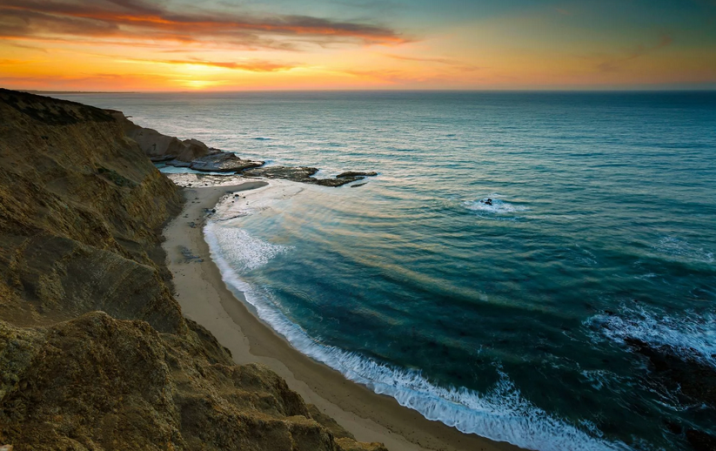
Everyone knows this difference. But let's take a closer look at all the nuances in order not to miss anything.
RIVER:
- She originates at height and moves down the relief.
- Basically, rivers go to the seas or flow into lakes or oceans. Sometimes to another river.
- Water in the rivers does not end, regularly updated due to the water cycle.
- The river is a source of drinking water, food. The ability to use as water roads to transport people and goods. It is also possible to receive electricity.
- Water moves in only one direction, does not change.
SEA:
- A large reservoir in the center of which cannot be seen.
- It has a random current. It changes depending on the wind and underwater movements of the water masses.
- Water has a bitter-salt taste.
Summing up, I want to go once again on the most important aspects: the beginning of the river is the source, and its end is the mouth that can be any reservoir. The river is different from the sea. It benefits people and water in such reservoirs never ends. It is important to protect and protect the rivers, try not to clog their environment.
Video: The world around the world is grade 1. Lesson - where are the rivers flow?
Video: Why do rivers flow?
Video: Rivers
Read on the topic:

